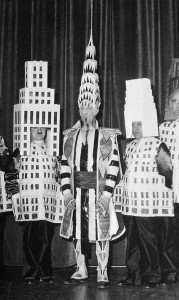 Guy Horton wrote an article recently in ArchDaily on starchitects. He included a number of comments by various architecture critics and observers (including your truly). I was struck that many of my colleagues called for “retiring” the term–whatever that means–as if it were primarily about semantics. It’s not, it’s primarily about money. Just as certain Hollywood actors can make a film script into a bankable movie, certain architects can add monetary value to a project (with donors, buyers, the general public). That is why the acting star and the designing star get paid more. And that is also why both invest heavily in press agents, publicists, and public relations. What certifies a starchitect is as hard to pin down as what makes an actor a star. Probably a combination of native ability, public acclaim, and desire (one rarely becomes a star by accident). Perhaps key is connecting with the zeitgeist. In a consumer culture that depends so heavily on name recognition and celebrity, it was probably inevitable that the architectural profession would eventually be affected–or is it infected? In any case, the impact has been significant. In The Favored Circle, the Australian architect/sociologist Garry Stevens posits the emergence of two distinct categories of architects. “Those at the summit of the field who design structures of power and taste for people of power and taste,” he writes, “have little in common with those who toil at CAD workstations detailing supermarkets.”
Guy Horton wrote an article recently in ArchDaily on starchitects. He included a number of comments by various architecture critics and observers (including your truly). I was struck that many of my colleagues called for “retiring” the term–whatever that means–as if it were primarily about semantics. It’s not, it’s primarily about money. Just as certain Hollywood actors can make a film script into a bankable movie, certain architects can add monetary value to a project (with donors, buyers, the general public). That is why the acting star and the designing star get paid more. And that is also why both invest heavily in press agents, publicists, and public relations. What certifies a starchitect is as hard to pin down as what makes an actor a star. Probably a combination of native ability, public acclaim, and desire (one rarely becomes a star by accident). Perhaps key is connecting with the zeitgeist. In a consumer culture that depends so heavily on name recognition and celebrity, it was probably inevitable that the architectural profession would eventually be affected–or is it infected? In any case, the impact has been significant. In The Favored Circle, the Australian architect/sociologist Garry Stevens posits the emergence of two distinct categories of architects. “Those at the summit of the field who design structures of power and taste for people of power and taste,” he writes, “have little in common with those who toil at CAD workstations detailing supermarkets.”


Like the NY Yankees’ A-Rod, starchitects are indeed about money, and they do add value. Unfortunately, the Yankees could go to the World Series but we’d still be talking about A-Rod. An entire neighborhood could do well, or it could do poorly, but the starchitects and their buildings get the media. There’s value added, yes, but only after the self is served does the team get their bowl of porridge. That seems to be the order of things with starchitects.